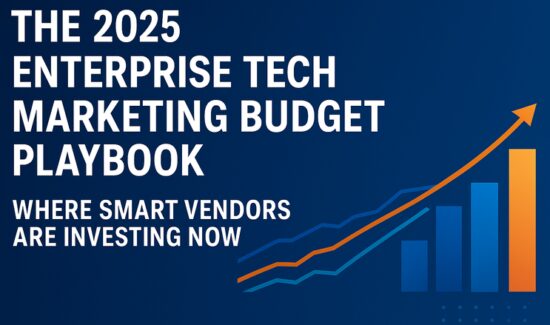How Transforming Pricing Will Set Your Company Up for Success


As part of Solutions Review’s Contributed Content Series—a collection of contributed articles written by our enterprise tech thought leader community—Pascal Yammine, the CEO of Zilliant, explains three pricing strategies that can help your company set itself up for success.
 It’s not an exaggeration to say that pricing is perhaps the most powerful—but misunderstood and underestimated—factor in an organization’s success. Pricing has the power to impact market position and drive demand, but it must align with a company’s margin and revenue goals. Because pricing is dynamic and constantly changing, it can be a real challenge to get right, and too many businesses are still executing traditional, do-it-yourself pricing strategies with manual processes.
It’s not an exaggeration to say that pricing is perhaps the most powerful—but misunderstood and underestimated—factor in an organization’s success. Pricing has the power to impact market position and drive demand, but it must align with a company’s margin and revenue goals. Because pricing is dynamic and constantly changing, it can be a real challenge to get right, and too many businesses are still executing traditional, do-it-yourself pricing strategies with manual processes.
Here are three ways to set your company up for success through a data-driven approach to pricing: organizational alignment and change management, practicing patience for long-term results, and putting the customer first.
Getting Everyone Onboard Via Change Management
Everyone must be fully informed and on board when adopting new solutions to support a modern pricing strategy. Company leaders should start by ensuring the correct messaging and training are distributed to the right teams to see a substantive ROI. But crucial to ensuring a new strategy’s success will be the right change management approach. This starts with selecting a pricing transformation leader within the organization that will accelerate the transition of pricing tech adoption. This person—either appointed by the C-suite or volunteering to take on the role—will need a vision of pricing success, a concrete plan to take the entire team there, and the authority to enforce those changes.
The right change management plan starts with defining the value of the new pricing strategy – bringing data that shows why exactly change is necessary and how exactly it will benefit each business user and the organization as a whole. After that comes building the initial plan, with a vision for how the strategy will change and metrics to hold teams accountable. Then comes reviewing and documentation of the processes to be changed, with the key priorities being data management, price updates, price review and quote/order.
Finally, develop the end-user training processes with plenty of opportunities for feedback, such as town hall sessions or “open door” policies. This will ensure that the new pricing strategy is effective and that users feel empowered and involved.
Practice Patience to See the Results
Results from an updated pricing strategy will trickle in at first, and sales teams will see changes as the plan adapts to organizational and economic shifts over time. To ensure that team members and company decision-makers remain aligned with the new methods, encourage them to have patience.
Decision-makers are typically adverse to change because of the fear of failure and of lost time and resources. In a world where everything is instantaneous, remember that it takes time to properly inspect new solutions from every angle. Company leadership can minimize fears by guiding every relevant team member through the transformation while simultaneously evaluating its fit for stakeholders. Initiating a digital transformation can be difficult for companies, especially when geared towards long-term results. However, updating pricing strategies to align with a tech-driven world can help companies reduce risk within their organization.
The best way to keep the C-Suite invested over a long duration is to use the right analytics so that project leaders can easily socialize wins and milestones, building momentum to ensure the new strategy can take root. Some crucial metrics include:
- Sales Rep & Customer Adoption: Track how recent price changes are accepted by sales reps and customers. From that, management can highlight and reward positive pricing behaviors and hold underperformers accountable. It can also provide insight into how well customers are receiving price increases and whether further adjustment is needed.
- Price Waterfalls: This visualization approach makes it easy to discern and drill deeper into each cost factor throughout the value chain to uncover areas of margin leakage and arrive at a pocket price.
Fine-tuning a new model in its beginning stages is common—be agile and listen, learn, tweak, and repeat until desired results begin to flow through the sales funnel. Teams should compare results to strategic expectations each quarter to best monitor its benefits and challenges. Using the right analytics can easily showcase how the new approach is actually driving value and delivering on KPIs.
Put the Customer First
A thoughtful pricing strategy always prioritizes the customer, given that they’re one of the most important end-users. Their satisfaction levels will determine whether implementation is a success or a failure. Organizations should ensure they guarantee market-aligned pricing, serve up customer-relevant products in e-commerce, make negotiations more efficient, and keep customers engaged during all changes.
Pricing needs to stay competitive within the rest of a company’s industry, but that’s easier said than done in today’s world. Don’t just monitor competitors; keep in mind how external factors impact the market and adjust accordingly. Additionally, modern B2B e-commerce is about more than self-service offerings, including using intelligence and other tools to identify new offerings that will truly benefit the customer. Never attempt to upsell a customer on a tool that they won’t necessarily need—the short-term revenue gain will be offset by their dissatisfaction with working with you.
Also, while some people like to haggle in their personal lives, that doesn’t always translate to a business context. Automation technology can assist in price customization and ensure market alignment early in the engagement. With this, customers can receive a competitive offer that coincides with an efficient (and more enjoyable) experience. Finally, just like the sales teams and other end-users within the organization, customers and their internal evangelists should be probed for feedback to ensure they’re on board with any new strategy.
Be on the Lookout for the Next Solution
Although a current pricing strategy may perform well for customers and sales teams, leaders should remain vigilant in searching for new processes to improve. Leaders should identify tools that offer faster response times, keep up with market changes, provide ease of use and self-service, and allow for governance or internal audit processes that ensure consistency across customer contracts relevant to each other.
Pricing is a business’s most effective lever for profitability and margin growth, and it is too important to be left to chance. Companies of all sizes can generate success by embracing an updated, tech-savvy pricing strategy.




















